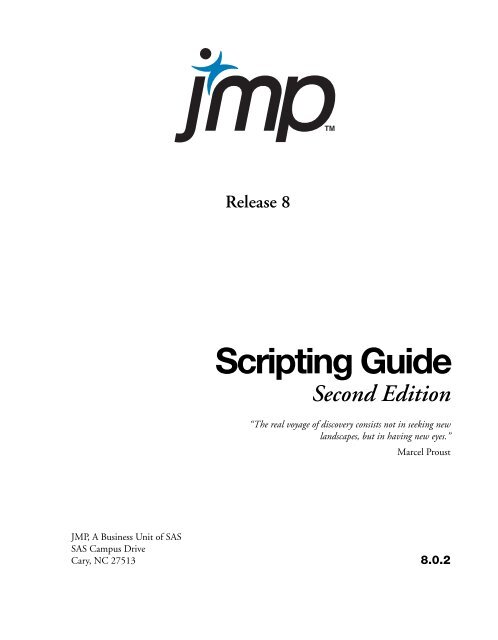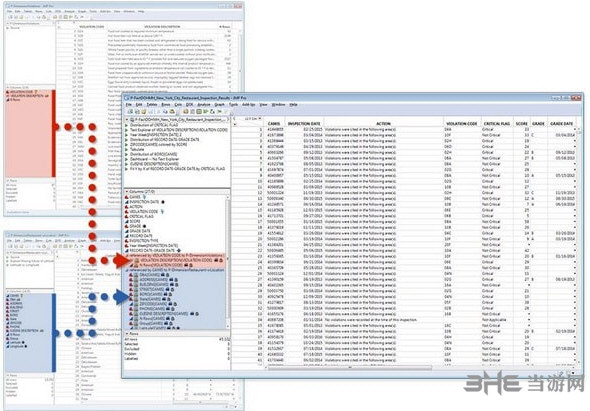
Sas jmp is doing bivariate how to#
14.Homework questions are for r/homeworkhelp How to ask a statistics question Modmail us if your submission doesn't appear right away, it's probably in the spam filter.14.3 - Measures of Association for Binary Variables.14.2 - Measures of Association for Continuous Variables.13.5 - Obtain the Canonical Coefficients.13.4 - Obtain Estimates of Canonical Correlation.Test for Relationship Between Canonical Variate Pairs 13.1 - Setting the Stage for Canonical Correlation Analysis.Lesson 13: Canonical Correlation Analysis.12.7 - Maximum Likelihood Estimation Method.12.6 - Final Notes about the Principal Component Method.12.4 - Example: Places Rated Data - Principal Component Method.11.7 - Once the Components Are Calculated.11.6 - Example: Places Rated after Standardization.11.5 - Alternative: Standardize the Variables.11.4 - Interpretation of the Principal Components.11.2 - How do we find the coefficients?.11.1 - Principal Component Analysis (PCA) Procedure.Lesson 11: Principal Components Analysis (PCA).10.5 - Estimating Misclassification Probabilities.10.1 - Bayes Rule and Classification Problem.9.6 - Step 3: Test for the main effects of treatments.9.5 - Step 2: Test for treatment by time interactions.9.3 - Some Criticisms about the Split-ANOVA Approach.8.10 - Two-way MANOVA Additive Model and Assumptions.8.9 - Randomized Block Design: Two-way MANOVA.8.7 - Constructing Orthogonal Contrasts.8.4 - Example: Pottery Data - Checking Model Assumptions.8.2 - The Multivariate Approach: One-way Multivariate Analysis of Variance (One-way MANOVA).8.1 - The Univariate Approach: Analysis of Variance (ANOVA).Lesson 8: Multivariate Analysis of Variance (MANOVA).7.2.8 - Simultaneous (1 - α) x 100% Confidence Intervals.7.2.7 - Testing for Equality of Mean Vectors when \(Σ_1 ≠ Σ_2\).7.2.6 - Model Assumptions and Diagnostics Assumptions.7.2.4 - Bonferroni Corrected (1 - α) x 100% Confidence Intervals.7.2.2 - Upon Which Variable do the Swiss Bank Notes Differ? - Two Sample Mean Problem.7.2.1 - Profile Analysis for One Sample Hotelling's T-Square.7.1.15 - The Two-Sample Hotelling's T-Square Test Statistic.7.1.12 - Two-Sample Hotelling's T-Square.7.1.11 - Question 2: Matching Perceptions.7.1.8 - Multivariate Paired Hotelling's T-Square.7.1.7 - Question 1: The Univariate Case.7.1.4 - Example: Women’s Survey Data and Associated Confidence Intervals.7.1.1 - An Application of One-Sample Hotelling’s T-Square.Lesson 7: Inferences Regarding Multivariate Population Mean.6.2 - Example: Wechsler Adult Intelligence Scale.Lesson 6: Multivariate Conditional Distribution and Partial Correlation.5.2 - Interval Estimate of Population Mean.5.1 - Distribution of Sample Mean Vector.Lesson 5: Sample Mean Vector and Sample Correlation and Related Inference Problems.


Here our understanding is facilitated by being able to draw pictures of what this distribution looks like. To further understand the multivariate normal distribution it is helpful to look at the bivariate normal distribution.


 0 kommentar(er)
0 kommentar(er)
